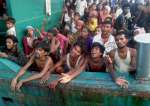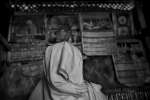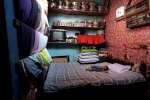Living Silence: Rohingya refugees in Bangladesh
"Living Silence" is a photographic exhibition of one of the world's most enduring refugee crises, by award-winning photographer Saiful Huq Omi.
Bangladesh has hosted refugees for over three decades. Today, 28,000 refugees from Myanmar known as the Rohingya - an ethnic, religious and linguistic minority people - are living in the two official refugee camps in the south-east of Bangladesh. Over half of them are children, many of whom have only ever experienced life in the camps. It is estimated that there are a further 200,000 Rohingya living outside the camps, unable to return to Myanmar where they fear persecution and exploitation.
Like refugees around the world, the Rohingya refugees are survivors. They are living in transience, waiting for the day they can go home in safety and in dignity. Until then, like any other people, they aspire to live a life free from violence and exploitation.
Together with other UN agencies and NGOs, UNHCR provides shelter, water, primary education and health care to refugees from Myanmar in the Nayapara and Kutupalong camps. UNHCR is also working with governments around the world to resettle some of the most vulnerable.























































